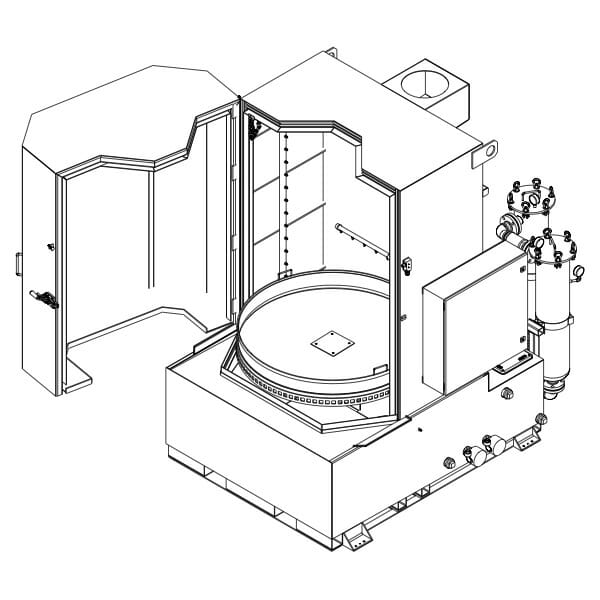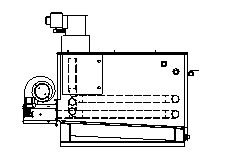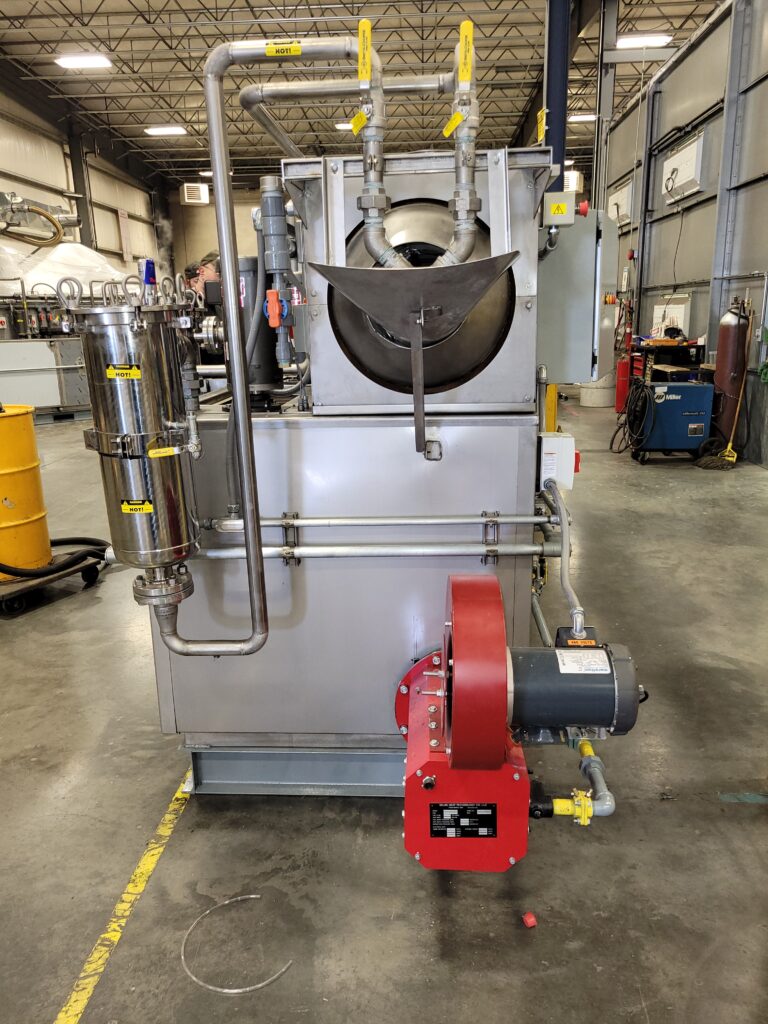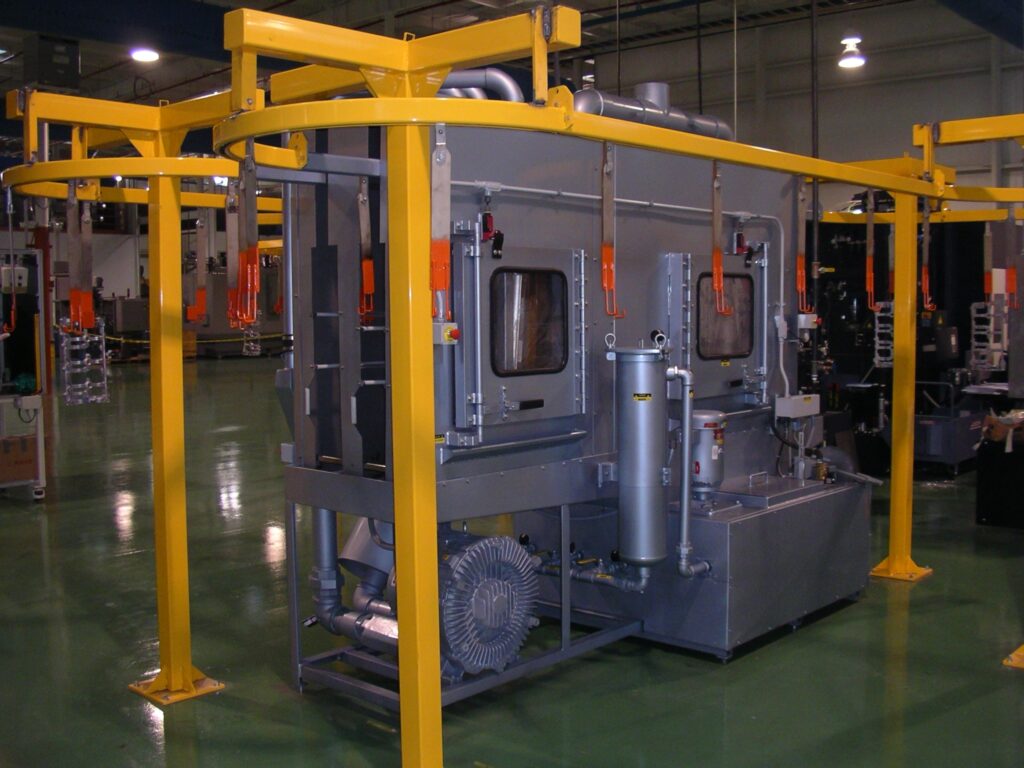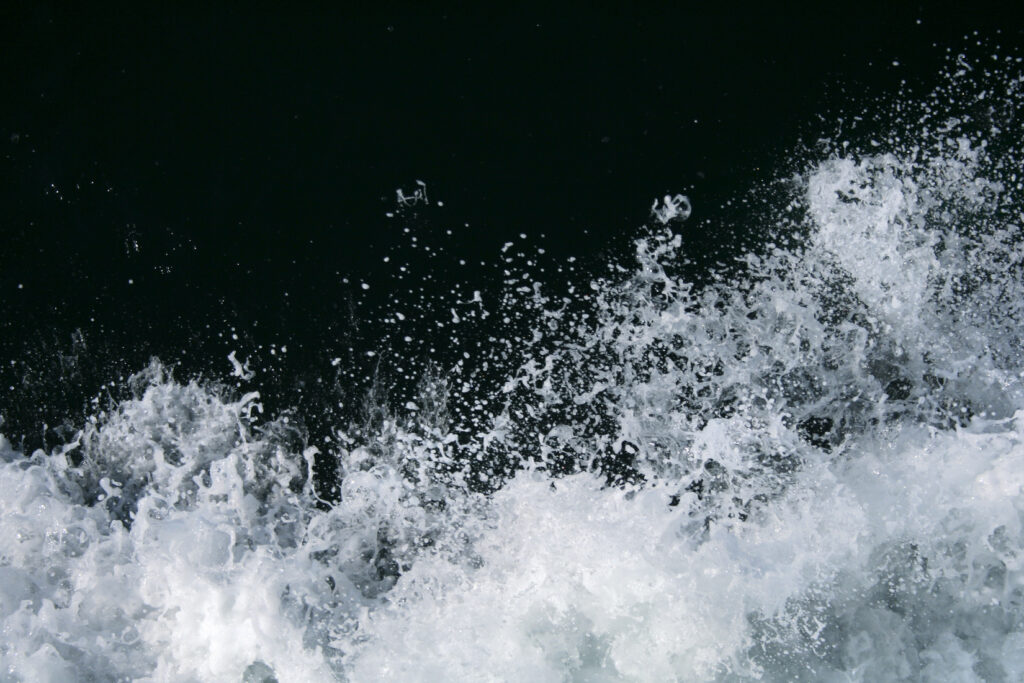Aqueous cleaning chemistries are an effective way to remove soils from parts. Organic soils, including motor oil and grease, and inorganic soils, such as scale and rust, can be eliminated with the right system and chemistry.
Every aqueous cleaner’s solvent is water. Unlike petroleum solvents, chemistries that are water-based clean without any harmful effects. Aside from water, what’s in an aqueous parts washer solution?
Wetting agents, builders, sequestering agents, inhibitors and other materials are added to the chemistry, enhancing its cleaning ability. What’s added to the cleaning chemistry depends on the part’s material and soils.
Wetting Agents
Water has a high surface tension. It doesn’t wet surfaces well. That’s why water is combined with a wetting agent, or surfactant, to make it an effective cleaner. Wetting agents lower the surface tension of water so that it can spread across a surface and slip underneath grime. Water and surfactants work together to pull soils from a part’s surface.
A Closer Look at Surfactant Cleaning Agents
Surfactant cleaning agents are emulsifiers. They emulsify soils, like oil, ensuring the particles don’t adhere to the parts again. All surfactants have a hydrophilic end (water-loving) and a hydrophobic end (water-hating).
In water, surfactants group together, forming spherical structures called micelles. A surfactant’s hydrophilic ends are attracted to water, so they place themselves on the outside of the micelle. The hydrophobic ends dislike water, preferring to remain inside the micelle structure.
During cleaning, the hydrophilic ends lift soils from the part’s surface. The soils are attracted to the hydrophobic ends within the micelles. Once the soils are lifted, the micelles trap them inside, rendering them unable to stick to the part’s surface again. Then, the flow of the system washes them away.
Types of Surfactant Cleaning Agents
- Anionic surfactants. Anionic surfactants have a negative charge and are most effective at lifting particulate soils. Examples of anionic surfactants are sulfates and gluconates.
- Nonionic surfactants. With a neutral charge, nonionic surfactants are excellent at emulsifying oils and cleaning metal. Nonionic surfactants are prone to separation depending on the temperature of the chemistry. When this happens, the cleaning solution becomes cloudy.
- Cationic surfactants. Lastly, cationic surfactants have a positive charge and can be used for antimicrobial purposes.
Builders
Builders are inorganic salts that boost the alkalinity of the cleaning solution. Hydroxides, borates and silicates are common builders. These substances are used to help maintain or increase the pH level of the cleaning chemistry. A higher alkalinity helps break down grease and other soils with greater efficacy.
Breakdown of Cleaning Solutions by pH
Builders and other additives must be compatible with the part’s material. Incompatible materials can corrode or damage the part’s surface. The material that needs to be cleaned, the processes taking place and the contaminants are three things to consider when creating a custom chemistry.
Acidic Aqueous Solutions (pH 1-5)
Surface treatments, such as phosphating and brightening, use acidic cleaning solutions. Moderate levels of nitric, sulfuric and phosphoric acids may be used for cleaning. Higher acidic levels may be used for descaling or derusting.
Neutral Aqueous Solutions (pH 7-9)
Neutral aqueous solutions are often used to clean parts after metalworking. These cleaning solutions need wetting agents to perform. They are gentle on softer metals and alloys, and they don’t leave residue behind.
Alkaline Aqueous Solutions (pH 9-12)
Alkaline aqueous solutions are commonly chosen to clean industrial parts. These cleaning solutions work well for removing grease from various types of metals. After cleaning, alkaline solutions rinse well so little to no residue is left behind.
When spray cleaning, alkaline solutions produce little foam within the parts washer, saving you frustration down the line.
High-alkaline Aqueous Solutions (pH 12-13)
Heavy-duty jobs call for an aggressive cleaner. High-alkaline aqueous solutions remove carbonized soils, heavy grease, rust and paint. On soft metals, these cleaning solutions can damage coatings and surfaces. After cleaning with a high-alkaline solution, parts need to be rinsed well to prevent corrosion and remove residue.
Chelators & Sequestering Agents
Hard water is caused by the presence of calcium, magnesium and iron ions. When left alone, these ions interact with the surfactant or detergent, which depletes the cleaning chemistry before it’s able to reach the soils. Chelators and sequestering agents bind with metal ions to prevent them from interacting with the surfactant.
Metal ions act like dirt. They use up the available surfactant, leaving none behind for the soils we want to remove. Sequestering agents soften water by deactivating hard water minerals, allowing the surfactant to do its job as efficiently as possible. By binding with multiple metal ions, sequestering agents improve the effectiveness of the cleaning solution.
Chelating agents can only bind to one ion at a time. They capture ions in their claw-like structures and alter their electronic charge. Once altered, the ions remain stuck in the solution, unable to interact with the surfactant.
Inhibitors
Other additives can be included in an aqueous cleaner to protect parts from corrosion, change the viscosity or affect foaming. For example, many ferrous metals rust after getting wet. Rust inhibitors leave a protective coating on parts to prevent oxidation. Some inhibitors protect soft metals, like brass and copper, from higher temperatures and pH levels during cleaning.
Three Types of Soils
The scientific principle of “like dissolves like” explains the larger relationship between solvents and solutes. Substances with a similar chemical makeup are soluble. In parts washing, cleaning solutions are often chemically similar to the contaminants.
- Polar and inorganic soils are soluble in water. Machining processes produce polar salts, soaps and anti-wear additives that can be emulsified and washed away in the cleaning solution. Other polar soils include rust, tarnish and scale.
- Non-polar or organic soils include stamping oils, heavy grease, wax, resins and other hydrocarbon or oxygenated contaminants. Soils produced from drawing and buffing fall under this category.
- Particulates are soils that cannot dissolve in the cleaning solution. Metal chips, dust, fibers and shavings must be lifted from the part and washed away.
Troubleshooting Your Cleaning Chemistry
Sometimes, parts cleaning doesn’t go as expected. If parts aren’t coming out clean, you may need a higher concentration of the aqueous cleaner, increased pH levels or a higher temperature. Mechanics, time, heat and chemistry work in tandem to clean parts. If you run into trouble, try adjusting one of these cleaning factors or talk to your manufacturer for assistance.
Result: Part surfaces are dark after cleaning.
Possible Reason:
- The concentration of the aqueous chemistry is too high.
- The temperature of the solution is too hot.
- The cleaner chemistry is too aggressive for the material.
Result: Parts have a rainbow after cleaning.
Possible Reason:
- Temperatures are too high during cleaning and drying.
Result: The cleaning solution is yellow or brown.
Possible Reason:
- The temperature is too hot.
- The concentration is too high for the materials.
- Too much emulsified oil has collected in the solution.
- Air has oxidized the solution, causing it to darken.
Result: Part surfaces appear pitted after cleaning.
Possible Reason:
- The chemistry is too aggressive for the material. Switch to a lower pH or add more corrosion inhibitors.
How can you make sure an aqueous chemistry will work?
At Jenfab, we test wash your industrial parts for free before you make a purchase. Our test lab provides particle count and molecular weight analyses from before and after the test wash.
Are you ready to invest in an aqueous parts washer?
Request a quote or call (800) 524-9274 today for more information about aqueous parts cleaning. We manufacture aqueous parts washers of all sizes and configurations to meet your needs.



